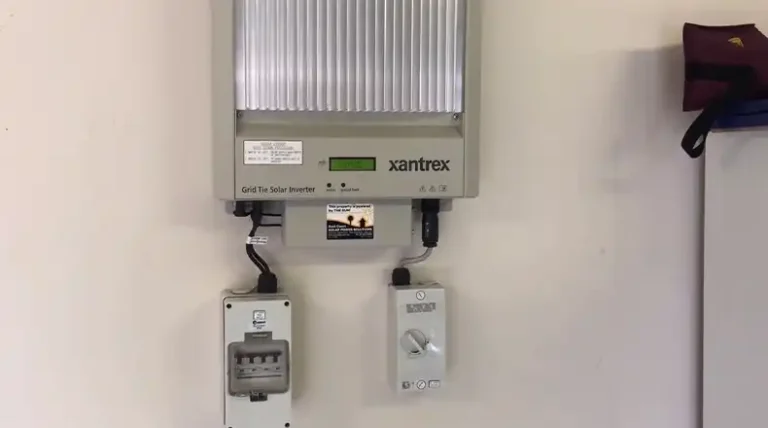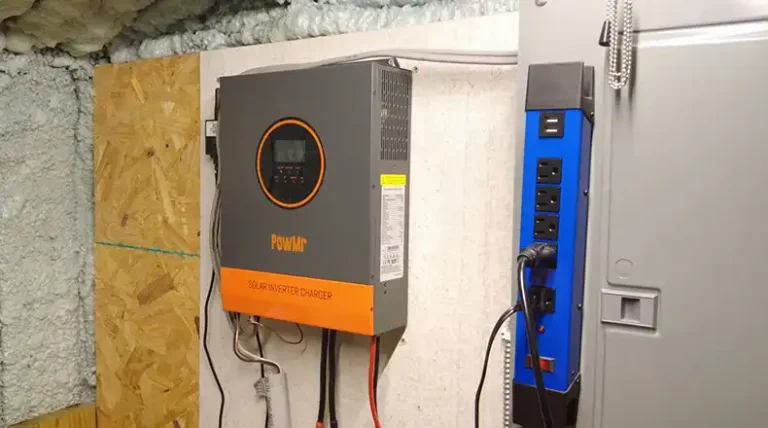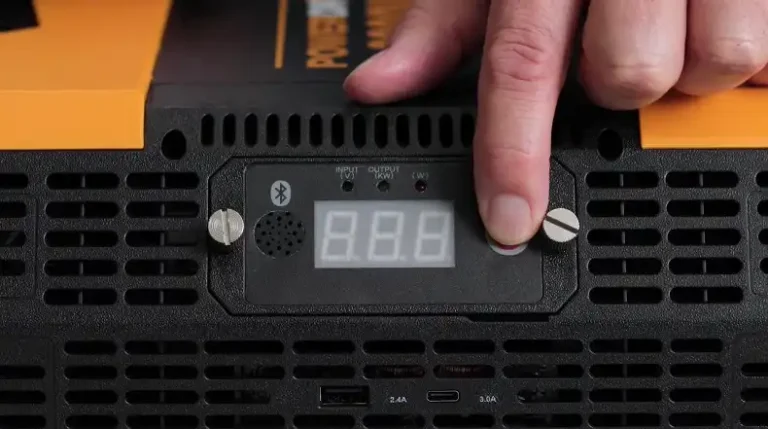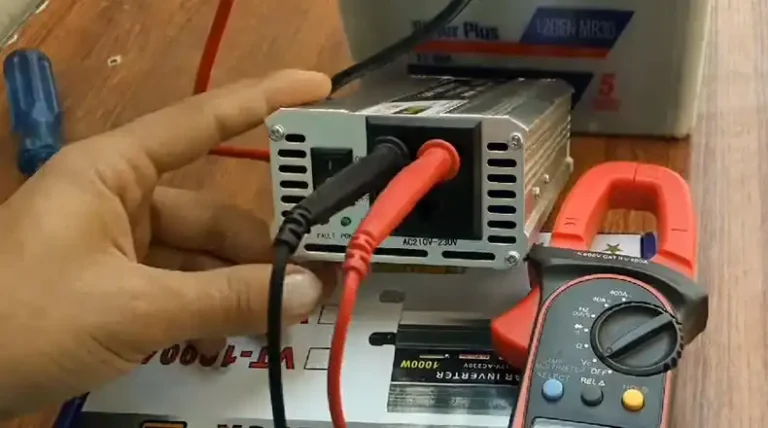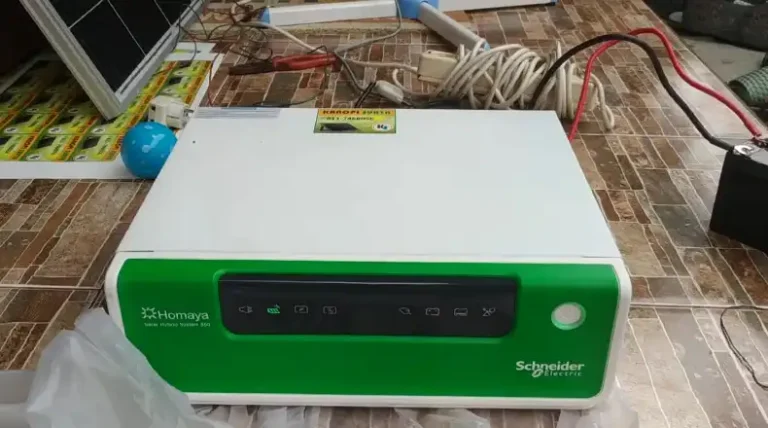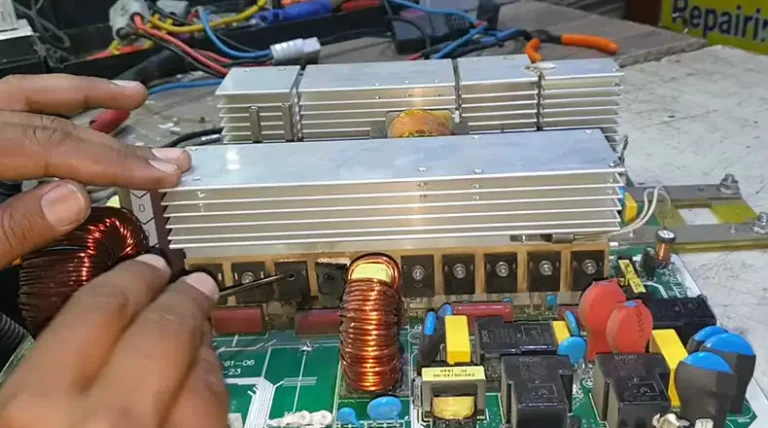Modified Sine Vs Pure Sine Wave Inverter
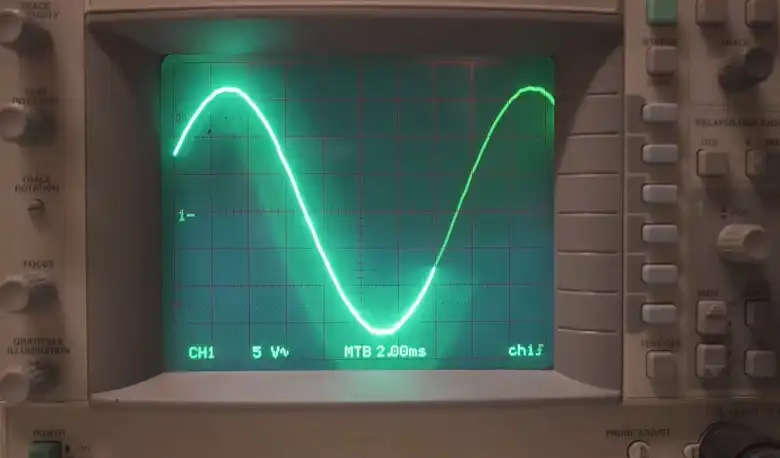
When setting up a solar power system, one crucial component you’ll need to consider is the inverter.
Solar inverters play a vital role in converting the direct current (DC) electricity generated by your solar panels into the alternating current (AC) used by household appliances.
But not all inverters are created equal. The two main types you’ll encounter are pure sine wave and modified sine wave inverters.
Understanding the differences between these inverter types is essential for ensuring your solar setup operates efficiently and safely.
Pure sine wave inverters produce a smoother, more consistent electrical output that closely mimics the power from your utility grid.
In contrast, modified sine wave inverters generate a choppier waveform that may cause issues with certain sensitive electronics.
While modified sine wave inverters are often cheaper, they come with some trade-offs in terms of compatibility and efficiency.
What is a Solar Inverter?
Solar inverters are a crucial component in any solar power system. They serve as the gateway between your photovoltaic panels and the devices that draw energy from your system. But what exactly do they do?
At its core, a solar inverter’s primary function is to convert the direct current (DC) electricity produced by your solar panels into alternating current (AC) electricity.
This conversion is necessary because most household appliances and the power grid itself operate on AC power.
In addition to this fundamental task, modern inverters often perform several other important functions:
- Voltage conversion: Inverters can adjust the voltage to match the requirements of your appliances or the grid.
- Maximum power point tracking (MPPT): This feature helps optimize the power output from your solar panels.
- Grid synchronization: For grid-tied systems, inverters ensure the electricity they produce matches the grid’s frequency and phase.
- Safety features: Many inverters include protective measures such as automatic shut-off in case of power outages.
Pure Sine Wave Inverters
Pure sine wave inverters are considered the gold standard in solar power systems. But what makes them special?
Definition and Characteristics
A pure sine wave inverter produces AC power with a waveform that is identical to, or sometimes even cleaner than, the power supplied by your utility company. This waveform is a smooth, continuous wave that rises and falls in a sinusoidal pattern.
Applications and Compatibility
Pure sine wave inverters are compatible with virtually all AC electronic devices. They’re especially crucial for powering:
- Sensitive electronics like computers, TVs, and audio equipment
- Medical devices such as CPAP machines
- Appliances with AC motors (e.g., refrigerators, microwaves)
- Devices with transformers or timers
Advantages:
The benefits of pure sine wave inverters include:
- Higher efficiency: They deliver power more efficiently, reducing energy waste.
- Cleaner power: The smooth waveform results in less electromagnetic interference.
- Quieter operation: Appliances tend to run more quietly on pure sine wave power.
- Longer equipment lifespan: The clean power can help extend the life of your devices.
While pure sine wave inverters are typically more expensive than their modified sine wave counterparts, their superior performance and compatibility make them a wise investment for most solar setups.
Modified Sine Wave Inverters
Modified sine wave inverters offer a more budget-friendly alternative to pure sine wave inverters, but they come with some trade-offs. Let’s explore what sets them apart.
Definition and Characteristics
A modified sine wave inverter produces a waveform that approximates a sine wave but is not as smooth. Instead, it creates a stepped, squared-off wave that rapidly switches between positive and negative voltages.
Applications and Compatibility
Modified sine wave inverters work well with many common devices, including:
- Incandescent lights
- Non-computerized power tools
- Some kitchen appliances without digital displays
However, they may not be suitable for sensitive electronics or devices with AC motors.
Advantages and Limitations:
Advantages:
- Lower cost: Modified sine wave inverters are generally less expensive than pure sine wave models.
- Sufficient for basic needs: They can power many common household items adequately.
Limitations:
- Reduced efficiency: Some devices may use up to 20% more power when run on a modified sine wave.
- Potential for interference: They can cause buzzing in audio equipment or flickering in some lights.
- Incompatibility issues: Some devices may not work correctly or could be damaged over time.
- Increased heat generation: Appliances may run hotter, potentially reducing their lifespan.
Comparison: Pure Sine Wave vs Modified Sine Wave
When choosing between pure sine wave and modified sine wave inverters, it’s crucial to understand how they stack up against each other in various aspects. Let’s break down the key differences:
Efficiency:
Pure Sine Wave: Generally more efficient, with devices running at their intended power consumption levels.
Modified Sine Wave: Less efficient, with some devices consuming up to 20% more power than necessary.
Cost:
Pure Sine Wave: Typically more expensive due to more complex technology.
Modified Sine Wave: Usually cheaper, making them attractive for budget-conscious buyers.
Compatibility with Devices:
Pure Sine Wave: Compatible with virtually all AC electronic devices.
Modified Sine Wave: Works with many devices but may cause issues with sensitive electronics, motors, or anything with a transformer.
Power Quality and Interference:
Pure Sine Wave: Produces clean power with minimal harmonic distortion, resulting in less electromagnetic interference.
Modified Sine Wave: Can cause noticeable interference, such as buzzing in audio equipment or flickering in some lights.
Here’s a quick reference table summarizing the comparison:
| Aspect | Pure Sine Wave | Modified Sine Wave |
| Efficiency | High | Lower |
| Cost | Higher | Lower |
| Compatibility | Universal | Limited |
| Power Quality | Clean | Potential interference |
Understanding these differences is crucial in determining which type of inverter best suits your needs and the devices you plan to power with your solar system.
Choosing the Right Inverter
Selecting the appropriate inverter for your solar power system involves considering several factors. Here’s what you need to keep in mind:
Factors to Consider:
- Types of devices you’ll be powering: If you have sensitive electronics or medical equipment, a pure sine wave inverter is likely necessary.
- Budget: While pure sine wave inverters offer better performance, modified sine wave inverters can be a more affordable option for simpler setups.
- Energy efficiency: Consider the long-term energy savings of a more efficient pure sine wave inverter against the initial cost savings of a modified sine wave model.
- Future needs: Think about any devices you might add to your system in the future.
Sizing Your Inverter:
The size of your inverter should match the DC rating of your solar panel system. As a general rule:
- For a 3000-watt solar panel system, you’d need an inverter rated around 3000 watts.
- It’s better to slightly oversize your inverter to account for future expansions of your solar array.
Off-grid vs Grid-tied Systems:
- Off-grid systems: Both pure and modified sine wave inverters can be used, depending on your specific needs and devices.
- Grid-tied systems: Pure sine wave inverters are typically required to match the waveform of the utility grid.
Remember, while a modified sine wave inverter might save you money upfront, a pure sine wave inverter often provides better long-term value through improved efficiency and compatibility.
Conclusion
Choosing between a pure sine wave and a modified sine wave inverter is a crucial decision in setting up your solar power system.
While modified sine wave inverters offer a more budget-friendly option and can suffice for simpler setups, pure sine wave inverters provide superior performance, compatibility, and efficiency.
For most modern households with a variety of electronic devices, a pure sine wave inverter is often the better choice.
It ensures smooth operation of sensitive equipment, reduces energy waste, and can potentially extend the lifespan of your devices. However, if your power needs are basic and you’re working with a tight budget, a modified sine wave inverter could be a viable option.
Frequently Asked Questions
1. Is it OK to use modified sine wave?
Yes, it is generally okay to use a modified sine wave inverter in simple systems without sensitive electronics. They are often sufficient for basic applications like lighting, small appliances, and power tools.
2. Is modified sine wave okay for computers?
Most computers and electronic devices can run on a modified sine wave. However, it’s important to note that while they typically function, using a pure sine wave inverter is often recommended for sensitive electronics to ensure optimal performance and longevity.
3. What are the disadvantages of a modified sine wave inverter?
One of the main disadvantages of a modified sine wave inverter is that the peak voltage can vary with the battery’s voltage, which may cause issues with certain devices, especially those requiring consistent and stable power.
4. Can a fridge run on modified sine wave?
A fridge can run on a modified sine wave inverter, but it won’t operate as efficiently as it would on a pure sine wave. The compressor may also produce more noise, and the fridge might consume more power, potentially shortening its lifespan.
5. Will a modified sine wave inverter damage my TV?
Yes, using a modified sine wave inverter can potentially damage certain types of electronic devices, including some TVs. These inverters may cause issues like buzzing, overheating, or even permanent damage to sensitive electronics.

